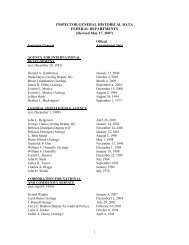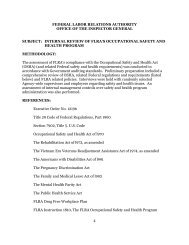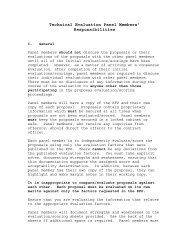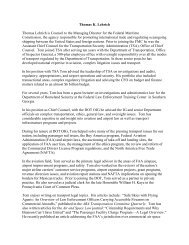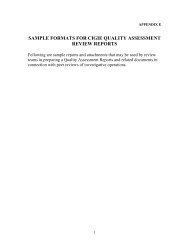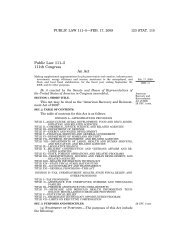GAO-12-208G, Designing Evaluations: 2012 Revision
GAO-12-208G, Designing Evaluations: 2012 Revision
GAO-12-208G, Designing Evaluations: 2012 Revision
You also want an ePaper? Increase the reach of your titles
YUMPU automatically turns print PDFs into web optimized ePapers that Google loves.
Criteria for a Good<br />
Design<br />
Chapter 3: The Process of Selecting an<br />
Evaluation Design<br />
adequately addressed. Evaluators must be explicit about the limitations of<br />
the study. They should ask, How conclusive is the study likely to be, given<br />
the design? How detailed are the data collection and data analysis plans?<br />
What trade-offs were made in developing these plans?<br />
<strong>GAO</strong> and other organizations have developed guidelines or standards to<br />
help ensure the quality, credibility, and usefulness of evaluations. (See<br />
appendix I and the guidance in <strong>GAO</strong>’s design matrix, figure 2, as an<br />
example.) Some standards pertain specifically to the evaluator’s<br />
organization (for example, whether a government auditor is independent),<br />
the planning process (for example, whether stakeholders were<br />
consulted), or reporting (for example, documenting assumptions and<br />
procedures). While the underlying principles substantially overlap, the<br />
evaluator will need to determine the relevance of each guideline to the<br />
evaluator’s organizational affiliation and their specific evaluation’s scope<br />
and purpose.<br />
Strong evaluations employ methods of analysis that are appropriate to the<br />
question; support the answer with sufficient and appropriate evidence;<br />
document the assumptions, procedures, and modes of analysis; and rule<br />
out competing explanations. Strong studies present questions clearly,<br />
address them appropriately, and draw inferences commensurate with the<br />
power of the design and the availability, validity, and reliability of the data.<br />
Thus, a good evaluation design should<br />
• be appropriate for the evaluation questions and context. The design<br />
should address all key questions, clearly state any limitations in<br />
scope, and be appropriate to the nature and significance of the<br />
program or issue. For example, evaluations should not attempt to<br />
measure outcomes before a program has been in place long enough<br />
to be able to produce them.<br />
• adequately address the evaluation question. The strength of the<br />
design should match the precision, completeness, and<br />
conclusiveness of the information needed to answer the questions<br />
and meet the client’s needs. Criteria and measures should be<br />
narrowly tailored, and comparisons should be selected to support<br />
valid conclusions and rule out alternative explanations.<br />
• fit available time and resources. Time and cost are constraints that<br />
shape the scope of the evaluation questions and the range of<br />
Page 28 <strong>GAO</strong>-<strong>12</strong>-<strong>208G</strong>



